/cdn.vox-cdn.com/uploads/chorus_image/image/56617179/CGF_STILL_00025.0.jpg)
After 13 years of zooming around Saturn and its many moons, NASA’s Cassini spacecraft has less than four days left at the planetary system before the probe is lost forever. Early Friday morning, Cassini will dive into Saturn’s atmosphere, eventually melting and breaking apart. The death plunge will put an end to the spacecraft’s mission, one that has taught us more about Saturn and its moons than we ever thought possible.
This final step has long been planned by the Cassini mission team, and it’s meant to protect the Saturn system. Two of the planet’s moons — Enceladus, with its subsurface ocean, and Titan, with lakes of methane — may have the right conditions to harbor life. By destroying Cassini, NASA ensures the spacecraft will never accidentally wander near the moons and contaminate them with microbes that may have hitched a ride from Earth.
In April, NASA maneuvered Cassini into its final stage, known as the “Grand Finale” — a path that takes the vehicle between Saturn and its famous rings, and closer to the planet than ever before. During these week-long orbits, the probe has been gathering some of its most crucial data yet. But the planet’s gravity will eventually get the best of Cassini after the 22nd Grand Finale orbit, pulling the spacecraft into the planet at 6:31AM ET on Friday. “The navigators have no more maneuvers to do,” Scott Edgington, the deputy project scientist for Cassini, tells The Verge. “We’re guaranteed to go into Saturn, no matter what happens.”
Once Cassini enters Saturn’s atmosphere, it will only be five or six minutes before the probe is taken apart. During the plunge, its instruments will be getting up-close measurements that will be sent back to Earth in real time. All that data will probably keep researchers busy for awhile. “Some of these analyses will take years for scientists to figure out,” says Edgington. “I would expect to still hear a lot more from Cassini in the coming years.”
Cassini’s destruction has been in the making for nearly a decade now. The spacecraft was launched in 1997, and it was the first probe intended to orbit and thoroughly study the Saturn system. After arriving at the planet in 2004, Cassini dropped a probe that landed on Titan, and began mapping out Saturn’s rings and moons, among many other science tasks. After four years, Cassini’s primary mission ended. But the spacecraft was still fully operational, and the mission team wanted to come up with ways to extend Cassini’s time at Saturn while preserving Enceladus and Titan. It couldn’t last forever: the spacecraft only has a limited amount of fuel, and eventually the team would lose the ability to maneuver Cassini in space.
So the team came up with a number of different options: one idea was to eject Cassini from the Saturn system, but that wasn’t exactly popular. “Of course, the scientists were like, ‘No, we’re orbiting Saturn. We have a perfectly healthy spacecraft. We want to explore Saturn more!’” says Edgington. Another option was to put Cassini into a distant orbit around Saturn, so the vehicle wouldn’t encounter Titan and Enceladus for 500 years, avoiding the risk of contaminating them. And then there was the option of bringing Cassini closer to Saturn, where it could continue flying by the planet’s moons for years and eventually fly between the ring gap — in other words: the Grand Finale. “You should have seen the eyes of the scientists,” says Edgington. “They were like kids in a candy store. They were delighted to hear this because it allowed us to do new science that we couldn’t do before.”
/cdn.vox-cdn.com/uploads/chorus_asset/file/9218615/3011_Cassini_GrandFinale_orbits.jpg)
So far, those orbits have been fruitful. The mission team has learned that the gap between Saturn and its rings is relatively free of large particles, something they didn’t expect. Plus, the researchers have gotten more in-depth measurements of the structure of Saturn’s magnetic field.
But the ultimate byproduct of the Grand Finale will be Cassini’s demise. During these final trips around Saturn, the spacecraft has repeatedly passed close to Titan, and the moon’s gravity has been slightly altering the vehicle’s path. This week, Cassini will pass by Titan again, and the encounter will put the probe on its crash course with Saturn. “We’re calling it a goodbye kiss,” says Edgington. “Titan will steal just enough energy from our orbit to send us right into Saturn’s atmosphere on September 15th.”
Cassini will try to observe as many things as possible before it goes down, including Enceladus, Titan, and Saturn’s rings and atmosphere. Then, a few hours before the plunge, Cassini will roll into its dive position: pointing its antenna at Earth while positioning some of its instruments toward Saturn’s atmosphere. This way, the vehicle can collect as much data as possible during the fall, while rapidly sending the info back to Earth.
:no_upscale()/cdn.vox-cdn.com/uploads/chorus_asset/file/9218627/Cassini_death.gif)
After that, there’s not much left to do but wait for Cassini’s signal to end. The spacecraft will be hitting the molecules in Saturn’s atmosphere at supersonic speeds, which will create a lot of friction and heat. Eventually, the temperatures will be so high that pieces of the spacecraft will start to break away and the vehicle will stop sending signals back to Earth. The loss won’t be confirmed until 90 minutes after the spacecraft’s destruction. Cassini’s radio signal takes a while to reach our planet, since the spacecraft is more than 700 million miles away. “By the time we’re watching for this signal to end, the spacecraft would have already been destroyed,” says Edgington.
Friday will mark the end of an era: Cassini has been such an extraordinary tool for learning about Saturn and its moons. The probe helped to confirm the existence of a potentially habitable subsurface ocean on Enceladus. It’s also showed that Titan has rivers and lakes created by rain, just like on Earth. What Cassini gathers on its dive may lead to even more discoveries, too, but it’s still going to be an emotional time.
“A lot of us have spent a lot of time on this project and we’re just in love with Saturn and its system and the spacecraft itself,” says Edgington. “And here we are: it’s not going to exist after next week. It’s going to be bittersweet and I can imagine a lot of tears being shed after that final signal is lost.”
Quelle: THE VERGE
+++
Diagram of Cassini’s final week, showing some of the milestones as the spacecraft heads for its plunge into Saturn. (Times are predicted and subject to change.)

HOW TO FOLLOW CASSINI’S END OF MISSION
The international Cassini mission reaches its dramatic finale this Friday by plunging into Saturn’s atmosphere, concluding 13-years of exploration around the ringed planet.
Here’s when to follow events broadcast by NASA via https://www.nasa.gov/nasalive this week (dates and times below are given in GMT/CEST; all times subject to change).
You can also watch the live stream on this page:
(Note that other broadcasts will play here outside of the below times)
13 Sept
17:00 GMT / 19:00 CEST: News conference with a detailed preview of final mission activities
15 Sept
~03:00 GMT / ~05:00 CEST: Final images expected to begin appearing online in Cassini raw image gallery
11:00-12:30 GMT / 13:00-14:30 CEST: Live commentary, covering end of mission (loss of signal expected on Earth ~11:54 GMT/13:54 CEST)
13:30 GMT/15:30 CEST: Post-mission news conference
A detailed end of mission timeline is provided here.
Mission updates are provided on Twitter from NASA’s @CassiniSaturn account, and shared via @esascience. On 15 September @esaoperations will also share live updates from ESA’s mission control in Darmstadt where teams will follow Cassini’s final plunge using the Agency’s deep-space ground station in Australia.
Good to know:
- It takes about 83 minutes for radio signals to travel across the 1.4 billion km between Earth and Saturn.
- No images will be taken during the final plunge into Saturn, as the data transmission rate required to send images is too high and would prevent other high-value science data from being returned.
- The final images will be taken on 14 September and are planned to include images of Titan, Enceladus, moonlet ‘Peggy’, a propeller feature in the rings and a colour montage of Saturn and its rings, including the aurora at the north pole (examples of previously released images of these targets are shown here).
- Eight instruments (CDA, CIRS, INMS, MAG, MIMI, RPWS, RSS, UVIS) will collect data during the final plunge, transmitting it back to Earth in near-real time.
- The mission is ending because, after two decades in space, its fuel is running out. To ensure a safe disposal of the spacecraft, and to avoid an unplanned impact onto pristine icy satellites such as ocean-bearing moon Enceladus, Cassini is being directed into the gas planet itself, where it will burn up.
- Since April, Cassini has been making weekly dives through the 2000 km gap between Saturn and its rings. This ‘Grand Finale’ maximises the scientific return of the mission, giving close dives past the inner and outer edges of the rings and the planet’s small inner moons, as well as close encounters with the upper reaches of Saturn’s atmosphere.
- The 22 Grand Finale orbits were supported by ESA ground stations, which received signals from Cassini to gather crucial radio science and gravitational science data.
- A final distant flyby with Titan on 11 September gave the gravitational assist needed to put the spacecraft on an impact course with Saturn.
Quelle: ESA
+++
CELEBRATING EUROPE’S SCIENCE HIGHLIGHTS WITH CASSINI
The international Cassini-Huygens mission has explored Saturn and its rings and moons for 13 years, and will conclude by plunging into the planet’s atmosphere next week. This article highlights some of the mission’s exciting discoveries led by European teams.
Skip to highlights on:
Titan
Enceladus
Saturn
Cassini is an international programme: a collaboration between NASA, ESA and Italy’s ASI space agency plus several separate European academic and industrial contributors. Nineteen nations contributed to building the spacecraft, and international science teams across the world have gained a better understanding of Saturn and its environment through the mission’s suite of 12 scientific instruments. Two of the instruments – the Cosmic Dust Analyser and the Magnetometer – are led by European principal investigator teams, but all teams are truly international. In total, 27 nations have participated in the mission.
Thousands of peer-reviewed academic publications have been generated, and about a third are led by a first author from an ESA Member/Cooperating State or ESA establishment – some of which are highlighted in this article. In addition, ESA provides support through its two sensitive, deep space tracking antennas at New Norcia, Western Australia, and Malargüe, Argentina, which played an important role during Cassini’s last months in orbit.
ESA’s Huygens probe
Cassini carried ESA’s Huygens probe to Saturn, where the probe detached and coasted for 20 days before descending to the planet’s largest moon Titan. Huygens touched down on Titan on 14 January 2005, becoming the first probe to land on a world in the outer Solar System.
It was equipped with six instruments, four led by European principal investigators and two US. The probe revealed the surprisingly Earth-like landscape below the moon’s dense and hazy nitrogen-rich atmosphere, its shorelines and river channels apparently carved by liquid methane, rather than water, given the –180ºC surface temperatures.
During its two-and-a-half-hour descent, Huygens profiled the moon’s atmosphere in terms of pressure, temperature and density, it measured super-rotating winds, and made in situ measurements of the chemical composition of haze particles. Huygens transmitted from the surface of Titan for another 72 minutes until Cassini disappeared over the horizon, but the data are still keeping scientists busy today.
Click here for detailed science highlights from the Huygens mission.
Cassini at Titan
Cassini continued to make discoveries at Titan during its 127 targeted close flybys – it also made many more distant flybys – covering all aspects of the moon from its internal structure to its hydrocarbon-rich surface, hazy atmosphere and beyond to its interaction with the solar wind.
Surface processes
Using the radar and Radio Science System, which includes the ASI-built high-gain antenna, Cassini revealed that more than 1.6 million sq km of Titan – almost 2% – are covered in liquid, including several large seas and numerous small lakes.
One study, led by Alice Le Gall at the Laboratoire Atmosphères, Milieux in France, found that one of the largest seas, Ligeia Mare, is filled with pure methane. A team led by Marco Mastrogiuseppe at Università La Sapienza, Rome, Italy, used radio sounding to determine that the depth of the sea was up to 160 m in places – the first detection of the bottom of an extraterrestrial sea. By looking at thermal emission they also determined that the seabed is covered by a layer of organic-rich sludge. While fresh methane rainfall likely contributes to the replenishment of the sea, insoluble heavier molecules such as nitriles and benzene are thought to sink to the floor to create the sludge.
Meanwhile, Thomas Cornet and colleagues at the Université de Nantes, France, detected ephemeral lakes – large, shallow depressions that sometimes fill with liquid, similar to those seen on Earth. Ontario Lacus is the largest lake in the southern hemisphere of Titan and its changing characteristics are thought to be due to subsurface hydrocarbon fluids occasionally welling up and flooding the depression, before then partially drying out again. Sediments around Ontario Lacus also indicated that the liquid level has been higher in the past.
Radar has also been used to analyse the changing dunes of Titan, which cover about 13% of its surface, stretching over 10 million sq km. Titan’s dunes, made of solid hydrocarbons that precipitate out of the atmosphere, are gigantic by Earthly standards: they are on average 1–2 km wide, hundreds of kilometres long and around 100 m high.
Alice Le Gall’s team found that their size and spacing vary across the surface, seemingly controlled by altitude and latitude. The main dune fields were found in lowland areas in equatorial regions, while those at higher elevations are narrower and more widely separated, indicating a thinner covering of sand.
In addition, the northern regions, home to the many lakes, likely has a greater soil moisture content, making sand particles less mobile. In general, the grains are shunted around by low-speed winds shifting over the moon’s surface in different directions throughout the year – which on Titan is equivalent to 30 Earth years – causing them to pile up in certain places over time.
Subsurface ocean
Hints that Titan boasted a subsurface ocean already came from Huygens based on detections of electrical currents in the moon’s upper atmosphere. The unique pattern of radio signals suggested an ocean buried around 55-80 km depth, under an icy crust.
Using Cassini’s radio science system, Luciano Iess’ team at the Università La Sapienza in Rome studied the internal structure of Titan by the way in which the spacecraft was pulled off course by the moon as it flew by. The deviations in the velocity are detectable in the spacecraft’s radio signals received by ground stations, and provide a measurement of the gravity variations along the orbit. This can be translated into the distribution of mass inside the moon, and therefore provide constraints on its internal structure. Using this technique, the team also found tides on Titan that distort the surface by more than 10 m. The observation points to a liquid ocean – most likely water – swirling around below the surface. Models suggest that it may be up to 250 km deep beneath an ice shell some 50 km thick.
The presence of an ocean would also help to explain some aspects of Titan’s atmosphere, namely why it has so much methane, which given its naturally short lifetime must be replenished somehow. Since the reservoirs of methane in Titan’s surface hydrocarbon lakes are not enough to explain the large quantities in the atmosphere, an ocean could act as a deep reservoir. Understanding Titan’s hydrocarbon cycle, and how seasonal atmospheric processes are linked to the production of organic haze has provided a focus for many instrument teams.
Organic haze
Scientists using the Cassini’s plasma spectrometer, CAPS, which is led by principal investigator Hunter Waite at the US Southwest Research Institute and with numerous co-investigators in Europe, have gradually honed in on the building blocks of the organic haze particles in Titan’s atmosphere.
Co-investigator Andrew Coates and his team at University College London’s Mullard Space Science Laboratory in the UK, which provided the instrument’s electron spectrometer, made the surprising observation of large negatively charged molecules in Titan’s upper atmosphere. Atoms and molecules there are ionised by solar ultraviolet radiation and by impacts of energetic particles that originate mainly from Saturn’s magnetosphere, breaking apart the nitrogen and methane. An abundance of positively charged molecules was to be expected, but not negatively charged ones, which are highly reactive and should not last long in Titan’s atmosphere before combining with other materials.
The initial discovery indicated that complex processes were involved in producing the haze particles, with the negative ions apparently playing a key role. Indeed, a recent study some 10 years after Cassini’s initial detection found linear carbon chain molecules around 1000 km above the moon’s surface that seed the larger organic molecules lower down.
Although no life has been detected on Titan, its atmosphere is thought to be similar to early Earth's before life developed, and thus can be seen as a planet-scale laboratory to understand the chemical reactions that may have led to life on Earth.
Changing seasons
With Cassini’s Composite Infrared Spectrometer instrument, scientists led by Nick Teanby from the University of Bristol, UK, studied the rapid change in seasons on Saturn’s moon Titan, following equinox in August 2009, which saw the formation of a swirling vortex and a build up of exotic gases at unexpectedly high altitudes of about 400 km over the moon's south pole.
The formation of the vortex indicates the effect of the changing seasons on the circulation pattern in Titan’s atmosphere, specifically with cooler air sinking down from warmer, high altitudes. The changes occurred over a surprisingly short period of time: around six months, quick for a world with over seven-year long seasons.
Scientists led by Remco de Kok of Leiden Observatory and SRON Netherlands Institute for Space Research used Cassini’s Visual and Infrared Mapping Spectrometer data to determine that this giant polar vortex contains frozen particles of the toxic compound hydrogen cyanide, HCN, showing that the atmosphere must be as cold as –148ºC, consistent with the rapidly cooling atmosphere as the seasons changed.
Beyond Titan’s atmosphere
Using CAPS, and also Cassini's Langmuir Probe, which was provided by the Swedish Institute of Space Physics and is part of the US-led Cassini Radio and Plasma Wave Science (or RPWS) package, scientists could study Titan’s uppermost, ionised, atmospheric layers: its ionosphere. The ionisation of molecules by solar ultraviolet light and impacts of energetic particles from Saturn’s magnetosphere not only lead to the production of the complex organic chemistry, but also create a loss of atmospheric constituents.
From the first flybys, the Langmuir probe could see that conditions in Saturn’s magnetosphere affect the structure and dynamics of Titan's ionosphere. Saturn and its magnetosphere rotate together with a period of nearly 11 hours, as inferred from radio measurements. At the distance of Titan, some 20 Saturn radii, the moon spends about 95% of its time inside the magnetosphere, a situation that causes a plasma flow that sweeps by Titan, eroding the upper layers of its atmosphere. About seven tonnes per day of Titan’s atmosphere were found to be escaping on average dominated by heavy ions – a significant loss over billions of years.
The Cassini magnetometer, led by principal investigator Michele Dougherty at Imperial College London, determined that Titan does not have its own intrinsic magnetic field, and also contributed to studies of Titan’s interaction with the outer fringes of Saturn’s magnetosphere.
Combined analysis of the magnetometer data with those from the Cassini Plasma Spectrometer and the Radio and Plasma Wave Spectrometer showed that when Titan is temporarily outside of Saturn’s magnetosphere, its atmosphere retains a memory of the magnetic field of the plasma that surrounds Saturn. When Titan was directly exposed to the solar wind the magnetometer team found that Titan behaves much like other unmagnetised bodies, such as Venus or Mars, with the solar wind draped around the moon’s atmosphere. Studying this effect helps us to understand processes associated with atmospheric loss over time.
Enceladus
The magnetometer also made important discoveries at Saturn’s icy moons, including a first hint at one of the greatest finds of the entire mission: that Enceladus was hiding a liquid water ocean below the frozen surface of its icy crust.
During the first flyby of Enceladus, the magnetometer saw Saturn’s magnetic field bending around the south pole of Enceladus in a shape that wasn’t symmetrical. This turned out to be the first detection of the plume that sprays from the moon's internal ocean, with other instruments later confirming with spectacular images and with the composition of the grains being ejected in the plume.
The Cosmic Dust Analyser (CDA), led by Ralf Srama of the University of Stuttgart in Germany, directly sampled the particles ejected by Enceladus. Particles in Saturn’s E-ring, which is fed by Enceladus, were found to show a high abundance of salts and minerals that could originate from a reservoir of liquid water.
Luciano Iess’ radio science investigations indeed confirmed the presence of an underground sea, with the ice shell thought to overly liquid water at a depth of around 30–40 km in the southern hemisphere. While the gravity data could not rule out a global ocean, a regional sea extending from the south pole to 50ºS latitude appeared most consistent with the moon’s topography and high local temperatures observed around the fractures (called “tiger stripes”), from which the plumes are seen to originate.
Furthermore, in situ measurements of the plumes, and detections of tiny silicate-rich particles, showed that there was likely hydrothermal activity occurring on the sea floor. The silicate-rich particles are believed to originate where hot water dissolves minerals from the moon’s rocky interior, which could take place at hydrothermal vents.
More recent analysis of data collected with Cassini's Ion Neutral Mass Spectrometer revealed hydrogen gas in the plume, again pointing to the reaction of rocks with hot water, continuing to build the case for the potential habitability of Enceladus’ underground ocean.
Saturn and its rings and moons
Awe-inspiring images of Saturn’s rings have marveled many viewers at their beauty. For one team led by Carl Murray at the University of London, the F ring and its many perplexing features has been their focus. The narrow and contorted ring is intimately linked to moons Prometheus and Pandora, which weave towards and away from the ring, drawing out structures in the ring material. The team also discovered that some of the small, rogue fragments occasionally crash through the core of the F ring, dragging out ice particles with them to form long streamers.
The F ring is not the only ring controlled by a moon. Enceladus feeds Saturn’s wide, diffuse E ring with icy water particles, which stretches from the orbit of the moon Mimas to beyond that of Titan, according to Cosmic Dust Analyser data. Enceladus is also a major source of ionised material filling the huge magnetic bubble around Saturn – the magnetosphere. It ejects about 100 kg of water into space every second. One of the plasma spectrometer’s major discoveries was that most of the ions in the Saturn system come from water ejected by Saturn’s moon Enceladus. When exposed to the magnetosphere and ultraviolet sunlight in space, the ejected particles become ionised, meaning they acquire an electric charge. But where do all the water-ions go? Using the Cassini Plasma Spectrometer and the magnetometer, Chris Arridge and colleagues at Lancaster University, UK, found the first direct evidence for explosive releases of energy in the magnetosphere, such that this process of ‘magnetic reconnection’ allows plasma to escape. During the grand finale orbits, Cassini’s spectrometer will try to determine if some of this plasma is lost to Saturn’s upper atmosphere.
The plasma spectrometer’s electron sensor also revealed that Enceladus is linked to Saturn by powerful electric currents. The motion of Enceladus and its ionosphere through Saturn’s magnetosphere acts like a dynamo, setting up an electrical current, and creating an auroral footprint on Saturn. The same process had already been seen between Jupiter and three of its moons.
Meanwhile, small moons Methone and Anthe, both discovered in Cassini images between the orbits of Mimas and Enceladus, were found to be linked to two peculiar breaks in the near-constant rain of high-energy electrons that bombard Cassini when it is near Saturn. Using Cassini's Low Energy Magnetospheric Measurement System, a part of the Magnetospheric Imaging Instrument, Elias Roussos from the Max Planck Institute for Solar System Research in Germany reported that the gaping holes fell along the orbits of the then-newly discovered moons.
The moons’ dusty surfaces are not only thought to absorb a proportion of the high-energy particles, but their surfaces are also losing dust through micrometeorite impacts, building up significant arcs of material along their orbits, creating near-invisible partial rings.
Roussos and colleagues also discovered a transient radiation belt at Saturn with the same instrument, near the orbit of moons Dione and Tethys. It was observed as sudden increases in the intensity of high-energy charged particles in the inner part of Saturn’s magnetosphere, and likely was caused by a change in the intensities of cosmic rays at Saturn arising from solar storms reaching the planet. The belt was detected for only a few weeks after each of its appearances, suggesting that the charged particles were absorbed by the moons. At the same time, the inner radiation belts were clearly separated by a permanent radiation gap along the orbit of moon Tethys, which apparently shields these belts from solar wind influences. Instead, those radiation belts probably arise from the interaction of the planet’s main rings and atmosphere with galactic cosmic ray particles that, unlike the solar wind, have the very high energies needed to penetrate the innermost Saturnian magnetosphere.
Beyond Saturn
Studying how Saturn’s vast magnetosphere interacts with the solar wind was an important aspect of Cassini’s studies. During a chance encounter with an unusually strong blast of solar wind arriving at Saturn, the Cassini Plasma Spectrometer and Magnetospheric Imaging Instrument detected particles being accelerated to ultra-high energies, and one of the strongest shocks ever encountered at Saturn. The scenario mimicked the kinds of accelerations that occur in supernova remnants, the death cries of dying stars, giving scientists the capability of studying the nature of a supernova shock in situ in our own Solar System and bridging the gap to distant high-energy astrophysical phenomena that are usually only studied remotely.
The Magnetospheric Imaging Instrument was also used to determine the shape of our Solar System’s heliosphere – the magnetic bubble created by the solar wind. It was previously thought to be comet-shaped, with a head pointed into the stream of the interstellar medium and a tail flowing downstream, but the Cassini data suggested it was more spherical, controlled by the interstellar magnetic field that it passes through.
A team led by ESA’s Cassini project scientist Nicolas Altobelli used the Cosmic Dust Analyser (CDA) to sample interstellar dust grains originating from outside of our Solar System. While most of the particles collected by the CDA originated from Enceladus, a handful stood out in their high speed and direction of impact. They could be traced back to the local interstellar cloud: an almost empty bubble of gas and dust our Solar System is travelling through with a distinct direction and speed.
The CDA also measured fast silicate-rich particles escaping Saturn’s environment. A stream of nanometer-sized silicate particles, originating from Saturn and travelling at very high speed (hundreds of km/s) was discovered as Cassini was arriving at Saturn. This particle population and the acceleration mechanism, linked to the rotating magnetic field of the planet, were known to exist at Jupiter – Cassini showed that the same physics are at play at Saturn.
Science until the end
Cassini's science instruments will continue returning unique data until the very end. Since 22 April 2017, Cassini has been making weekly dives between Saturn’s upper atmosphere and its innermost rings, collecting unprecedented data in this previously unexplored region, including the first in situ measurements in this environment.
While crossing the ring plane, the CDA has been directly sampling the composition of dust particles from different parts of the ring system. With its radio science investigation, Cassini can measure Saturn’s gravitational field as close as 3000 km from the upper cloud layers, greatly improving the current models of the planet’s internal structure, its rotation, and winds in its atmosphere.
Scientists expect the new data will also allow them to disentangle the gravity of the planet from the tiny pull exerted on the spacecraft by the rings, estimating the total mass of the rings to unprecedented accuracy. ESA ground stations in Argentina and Australia helped to receive Cassini's radio science data, providing a series of 22 tracking passes during the grand finale.
The grand finale orbits are also probing the planet’s magnetic field at close distances. Previous observations have shown that the magnetic field is weaker than expected, with the magnetic axis surprisingly well aligned with the planet’s rotation. New data to be collected by the Cassini magnetometer will provide insights to understand why this is so and where the sources of magnetic field are located, or whether something in Saturn’s atmosphere has been obscuring the true magnetic field from Cassini until now.
Over the last five weeks, Cassini’s orbits have dipped it into the upper atmosphere of the planet. One last distant flyby of Titan on 11 September will set the spacecraft on its final trajectory, adjusting its orbit to send it plunging into the planet’s atmosphere. Eight instruments (CDA, CIRS, INMS, MAG, MIMI, RPWS, RSS and UVIS) will collect data during the final plunge, transmitting it back to Earth in near-real time. Cassini will no doubt surprise scientists with more of Saturn’s hidden secrets right up until the very end of its pioneering mission.
Quelle: ESA
---
Update: 13.09.2017
.
Cassini’s 10 best pictures from its 13-year voyage around Saturn
NASA’s Cassini spacecraft has been voyaging through the solar system since October 1997. It went into orbit around Saturn in 2004 and has since taken thousands of images of the planet, its rings, and its many diverse moons. But on 15 September, the craft will end its mission by crashing into Saturn.
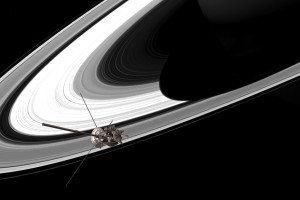
Cassini’s grand finale:
Join us as we count down to the fiery end of the Cassini spacecraft’s mission to Saturn
As the Cassini mission draws to an end, New Scientist looks back at some of the most impressive images that the spacecraft has sent back to Earth.
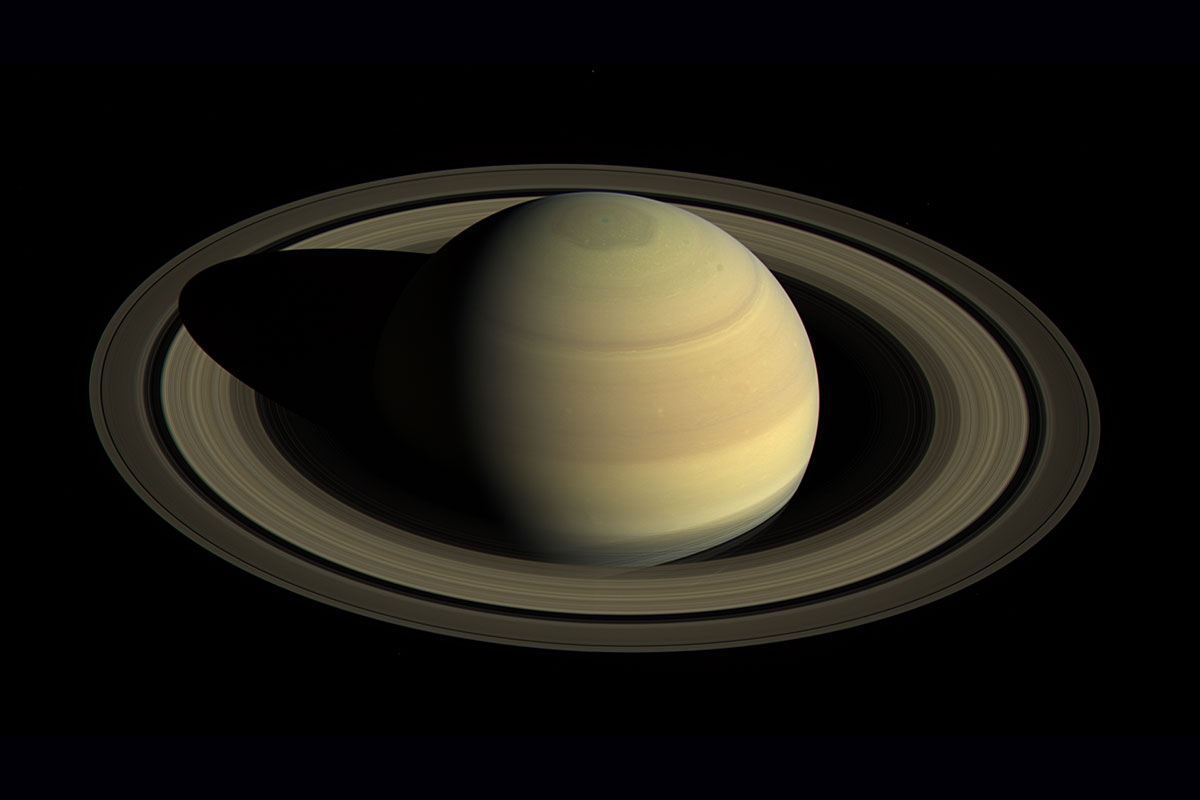
NASA/JPL-Caltech/Space Science Institute
Saturn approaching its northern summer
Taken in April 2016, this set of stitched-together images reveals the beginning of the summer solstice in Saturn’s northern hemisphere. Increased sunlight causes rising hazes that blur some of the planet’s swirling features and mute the bluish hues more visible in the northern winter.
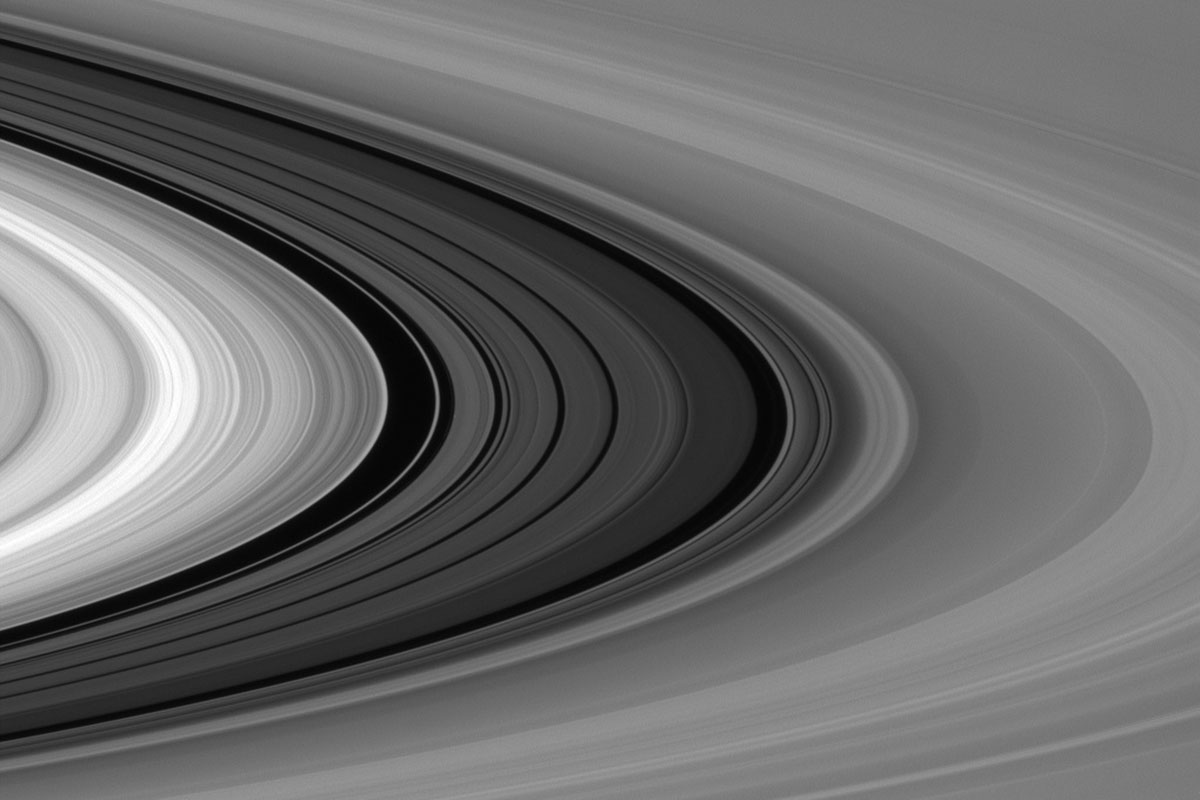
NASA/JPL-Caltech/Space Science Institute
Saturn’s rings
Cassini marked scientists’ first opportunity to study the temperature and composition of Saturn’s rings from an orbit around the planet. The rings are only about 10 metres thick and made mostly of ice chunks ranging in size from microns to metres across. This image was taken from about 1.2 million kilometres beyond Saturn’s surface.

NASA/JPL-Caltech/Space Science Institute
Enceladus and its geysers
Before we sent Cassini on a path past Enceladus, scientists expected Saturn’s sixth-largest moon to be frozen solid. But these geysers spewing from its south pole indicate a buried sea that could span the whole moon. Later on, Cassini sailed through the jets and found that they contain nearly all the required ingredients for life, making Enceladus’s subsurface ocean a strong contender for potential life in our solar system.
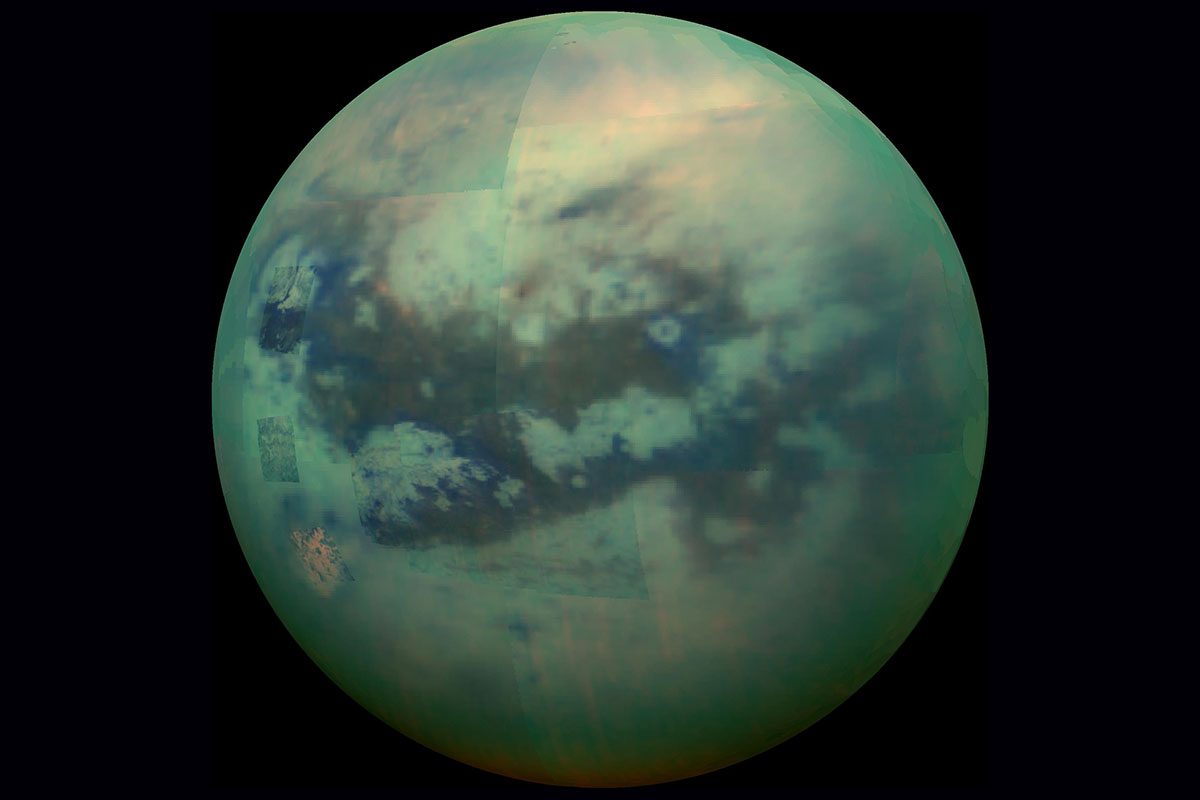
NASA/JPL/University of Arizona/University of Idaho
Titan
Saturn’s largest moon, Titan, also has serious potential for hosting microscopic life. Although visible light cannot peer through this moon’s thick, hazy atmosphere, infrared observations like the one seen here reveal its liquid methane seas. Titan is freezing cold and has no liquid water, but Cassini has seen some promising signs for the possibility of life there.

NASA/JPL-Caltech/Space Science Institute
Saturn’s polar hexagon
Saturn’s north pole hosts an Raumfahrt - Cassini Grand Finale Around Saturn -Update-5



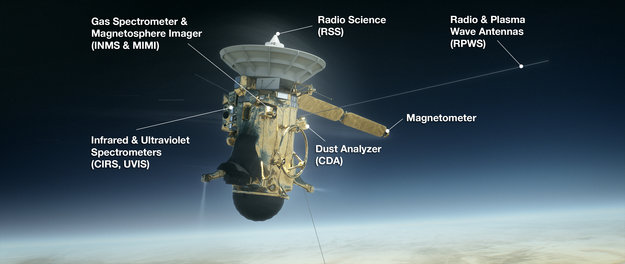


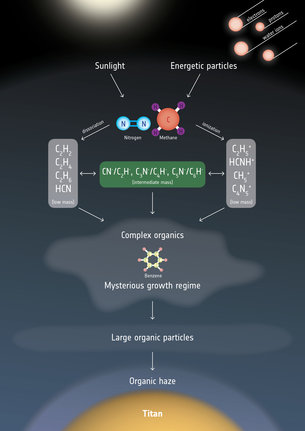



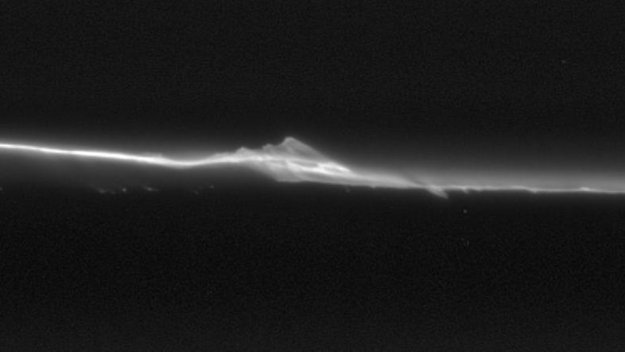


NASA's Cassini spacecraft will meet its fiery end in Saturn's atmosphere on Friday